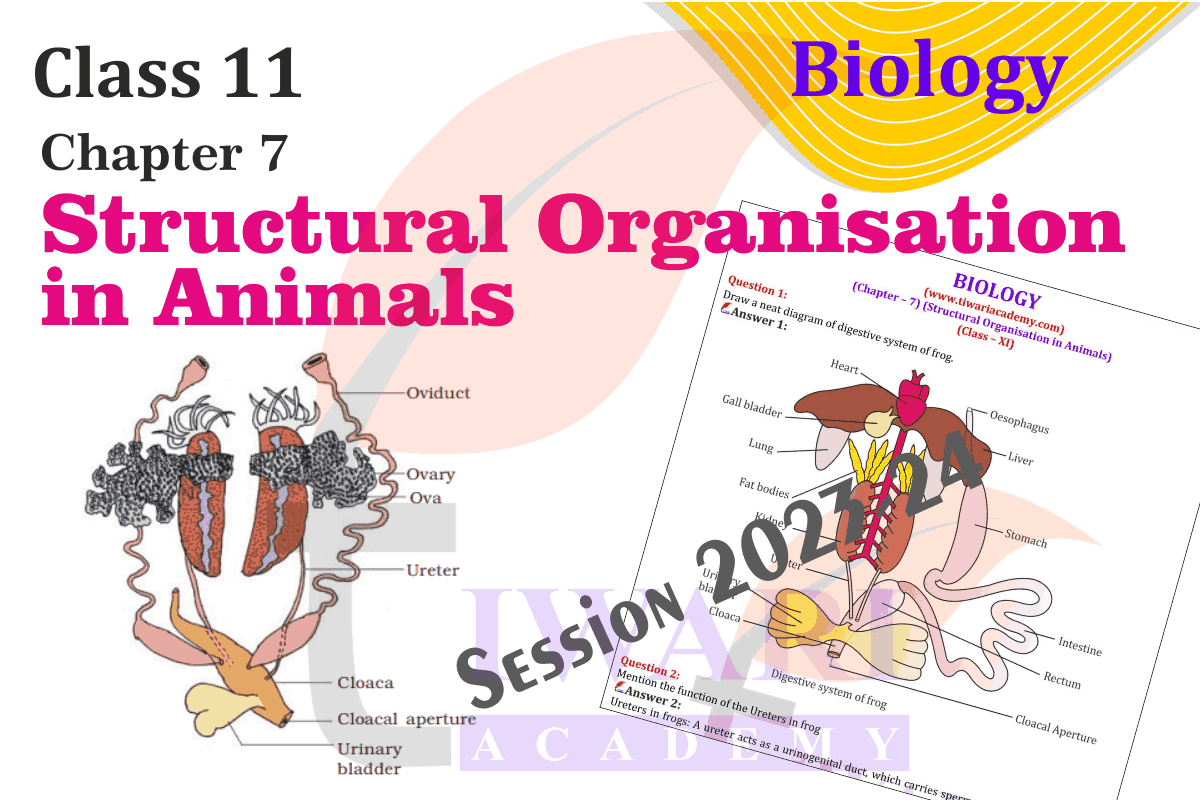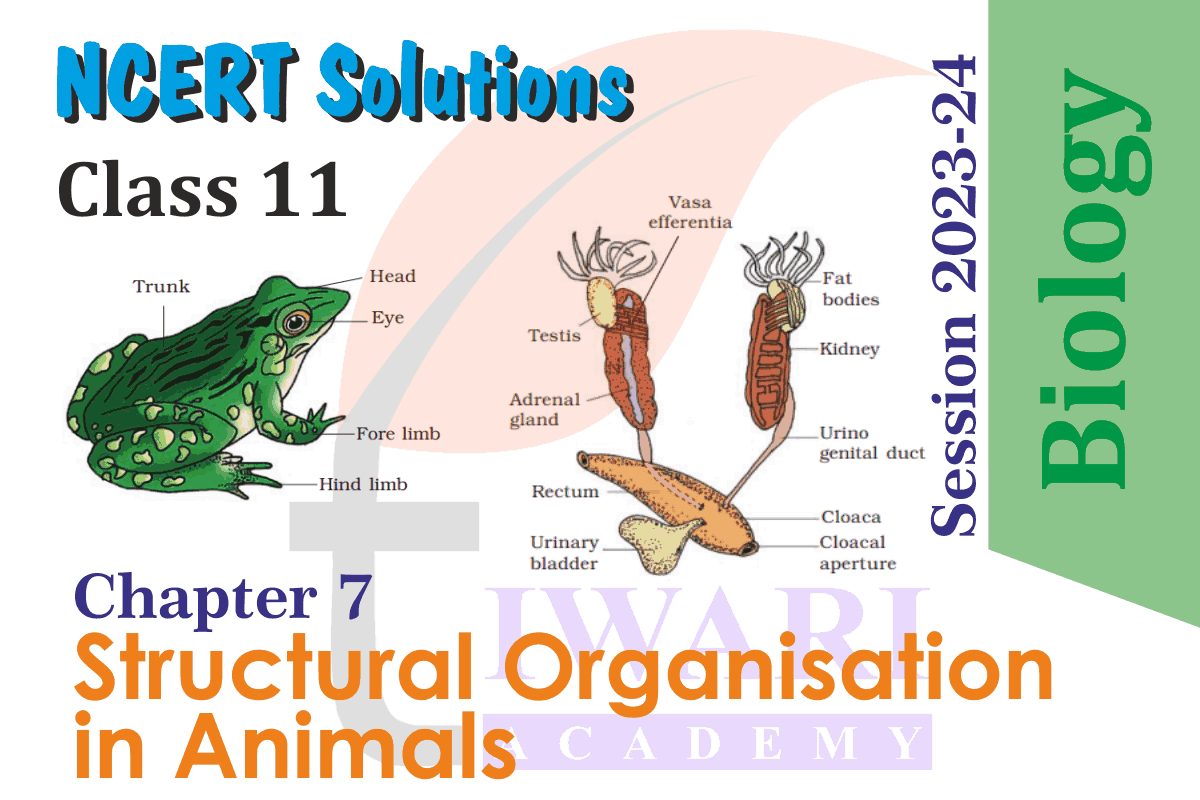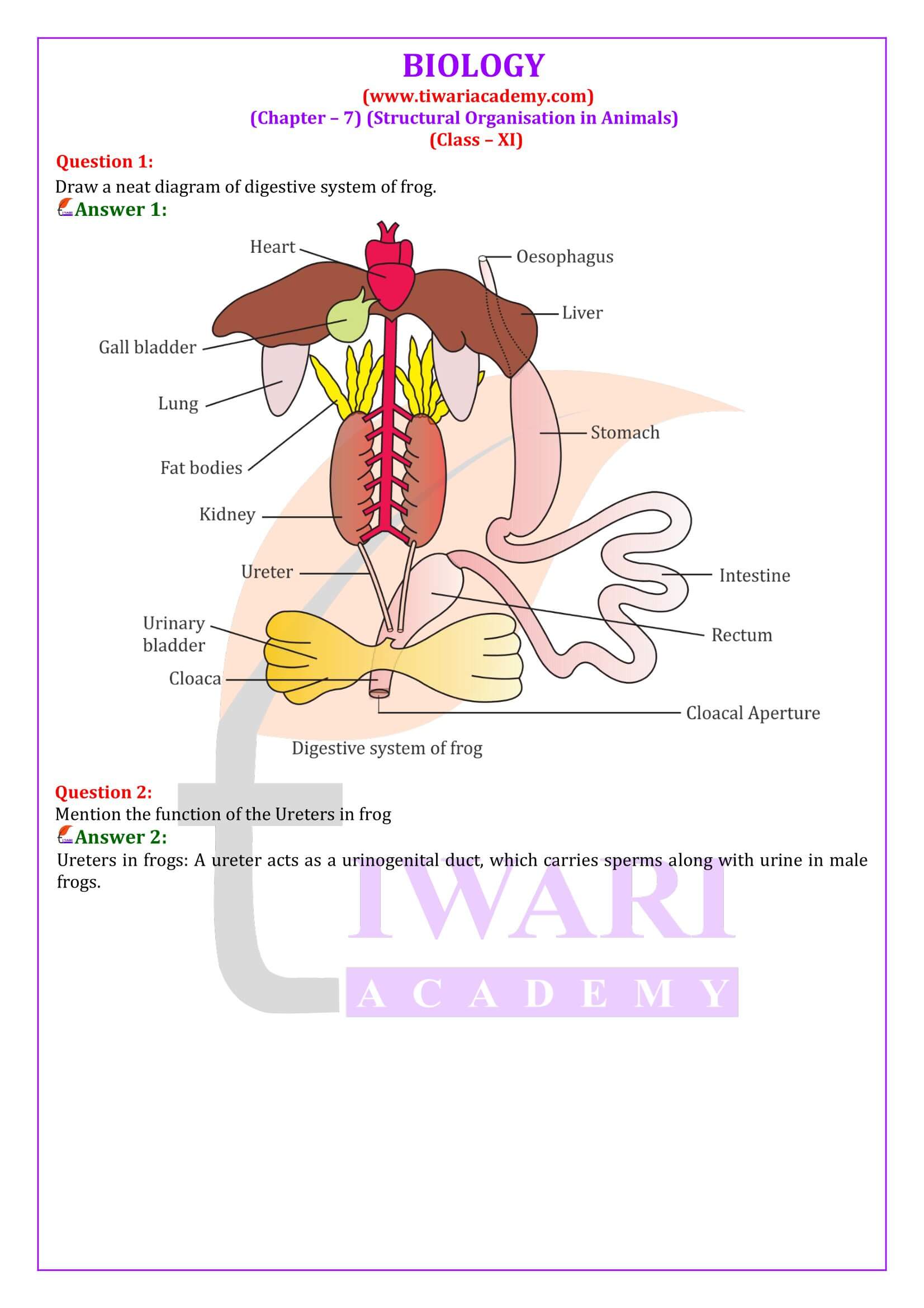NCERT Solutions for Class 11 Biology Chapter 7 Structural Organisation in Animals in Hindi and English Medium to download in PDF format free or Study online without downloading for academic session 2025-26. NCERT Solutions based on latest CBSE Books are also available to download. Visit to Discussion Forum to share your knowledge with the others.
NCERT Solutions for Class 11 Biology Chapter 7
Chapter 7 Structural Organisation in Animals Solutions

| Class: 11 | Biology |
| Chapter 7: | Structural Organisation in Animals |
| Content: | Exercises Answers and Practice Questions |
| Content Type: | PDF, Videos, Text and Images |
| Session: | Academic Year 2025-26 |
| Medium: | English and Hindi |
Class 11 Biology Chapter 7 Solutions in English
NCERT Solutions for Class 11 Biology Chapter 7 are given below to free download. Download Offline Apps based on latest NCERT Solutions 2025-26 for new session. NCERT Books based on new CBSE Syllabus 2025-26 are also available to download. Join the Discussion Forum to share your knowledge.

Class 11 Biology Chapter 7 Extra Questions
Name the tissue which contains Haversian canals.
Mammalian bone.
Mention two special properties of nervous tissues.
Excitability and conductivity.
Name the large cells present in adipose tissue.
Adipocytes.
Name the cells responsible for clotting of blood.
Blood platelets.
What are exocrine glands?
Glands which discharge their secretions into ducts.
Where are RBC’s formed?
Bone narrow
A muscular fibre having no striations and tapers at both ends. Name it.
Smooth or non-striated muscle fibre.
Important Notes on Structural Organisation in Animals
THREE TYPES OF CELL JUNCTIONS
1. Tight junctions: Plasma membranes of adjacent cells are fused at intervals. They help to stop substances from leaking across a tissue.
2. Adhering junctions: Perform cementing function to keep neighbouring cells together.
3. Gap junction: Facilitate the cells to communicate with each other by connecting the cytoplasm of adjoining cells for rapid transfer of ions, small molecules and sometimes big molecules.
Specialised Connective Tissues
1. Cartilage: made up of chondrocytes and collagen fibres; inter cellular material is solid and resists compression. Present in tip of nose outer ear joints, etc.
2. Bones: Ground substance is rich in calcium salts and collagen fibres Osteocytes are present in lacunae. Bones support and protect softer tissues and organs. They interact with skeletal muscles to bring about movements. Bone marrow in some bones is the site of blood cell formation.
3. Blood: Fluid connective tissue, consists of plasma and blood cells.
Important Questions on 11th Biology Chapter 7
Give the common name of Periplaneta americana.
The common name of Periplaneta americana is the American cockroach.
How many spermathecae are found in earthworm?
Four pairs of spermathecae are present in earthworms. They are located between sixth and the ninth segments. They help in receiving and storing the spermatozoa during copulation.
What is the position of ovaries in the cockroach?
In a cockroach, the pair of ovaries is located between 12th and 13th abdominal segments.
How many segments are present in the abdomen of cockroach?
In both sexes, the abdomen of a cockroach consists of ten segments.
Where do you find malphigian tubules?
Malphigian tubules are main excretory organs of cockroaches. They form a part of the alimentary canal.
What is the function of nephridia?
Nephridia are segmentally arranged excretory organs present in earthworms.
How many types of nephridia are found in earthworm based on their location?
On the basis of their location, three types of nephridia are found in earthworms. They are: Septal nephridia: These are present on both sides of the inter-segmental septa behind the 15th segment. They open into the intestines. Integumentary nephridia: These lie attached to the body wall from the third segment to the last segment, which opens on the body surface. Pharyngeal nephridia: These are present as three paired tufts in fourth, fifth, and sixth segments.
Mention briefly about the circulatory system of earthworm.
Earthworms (Pheretima) have closed blood vascular systems, which consists of the heart, blood vessels, and capillaries. The heart pumps blood for circulating it in one direction. Blood is supplied by smaller blood cells to the gut nerve cord and the body wall. Blood glands are present in the 4th, 5th, and 6th segments, which produce blood cells and haemoglobin dissolved in blood plasma. Blood cells in earthworms are phagocytic in nature.
What are the cellular components of blood?
Components of blood include erythrocytes (RBCs), leucocytes (WBCs), and thrombocytes (platelets). These components form 45% of blood. They are suspended in the remaining fluid portion, called plasma. Mammalian erythrocytes are biconcave, coloured cells devoid of a nucleus. They help in transporting respiratory gases. Leucocytes or white blood cells are nucleated cells. They can be divided into two types, granulocytes (neutrophils, eosinophils, and basophils) and agranulocytes (lymphocytes and monocytes). They help fight against various disease-causing germs entering the body. Thrombocytes are cell fragments produced from megarkaryocytes of the bone. They play a major role during blood coagulation.
Dense Connective Tissue
Fibres and fibroblasts are compactly packed.
1. Dense Regular: Collagen fibres present in rows. Tendons attach skeletal muscle to bone. Ligaments attach bone to bone.
2. Dense Irregular: Has collagen fibres and fibroblasts oriented differently. This tissue is present in the skin.




